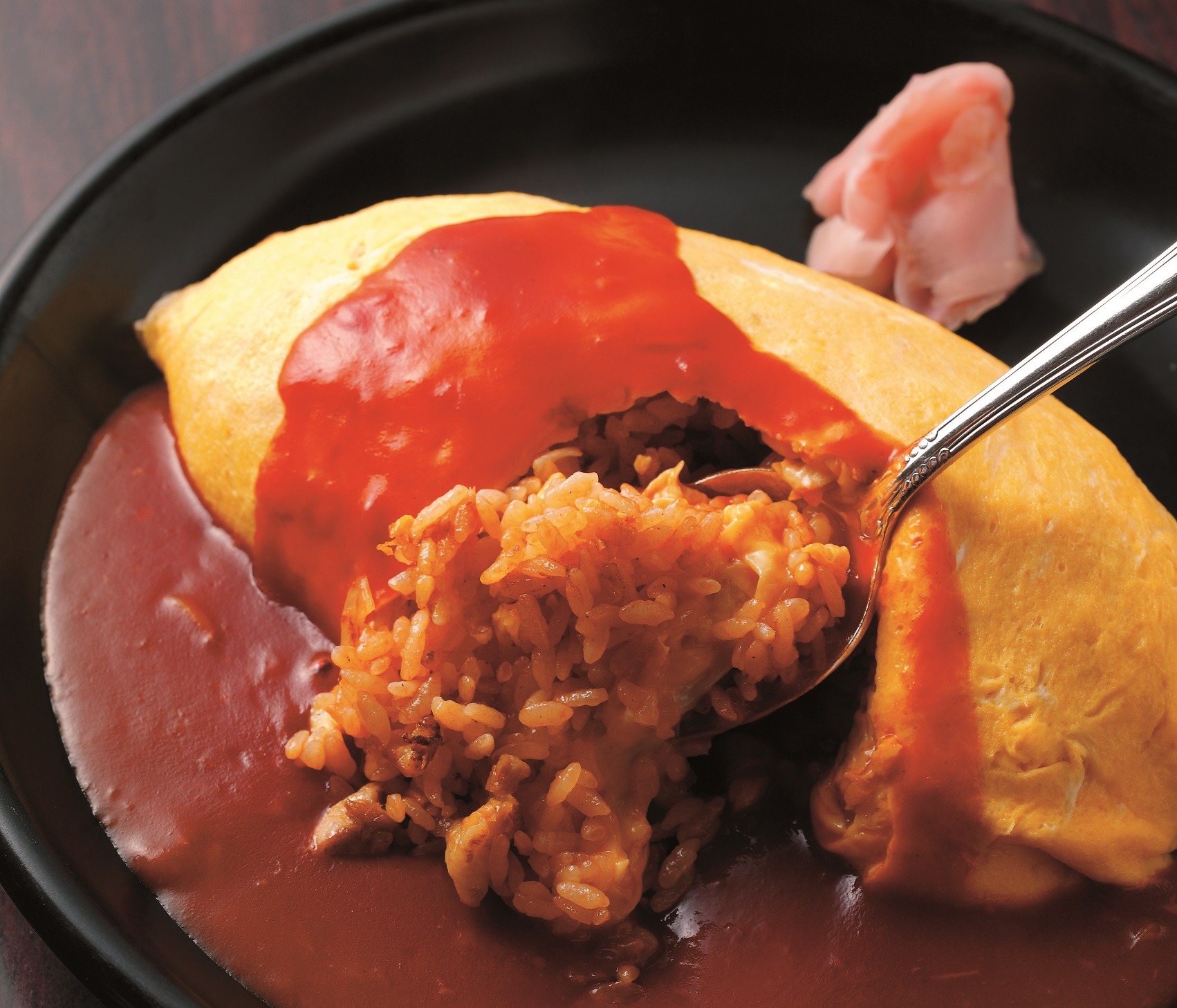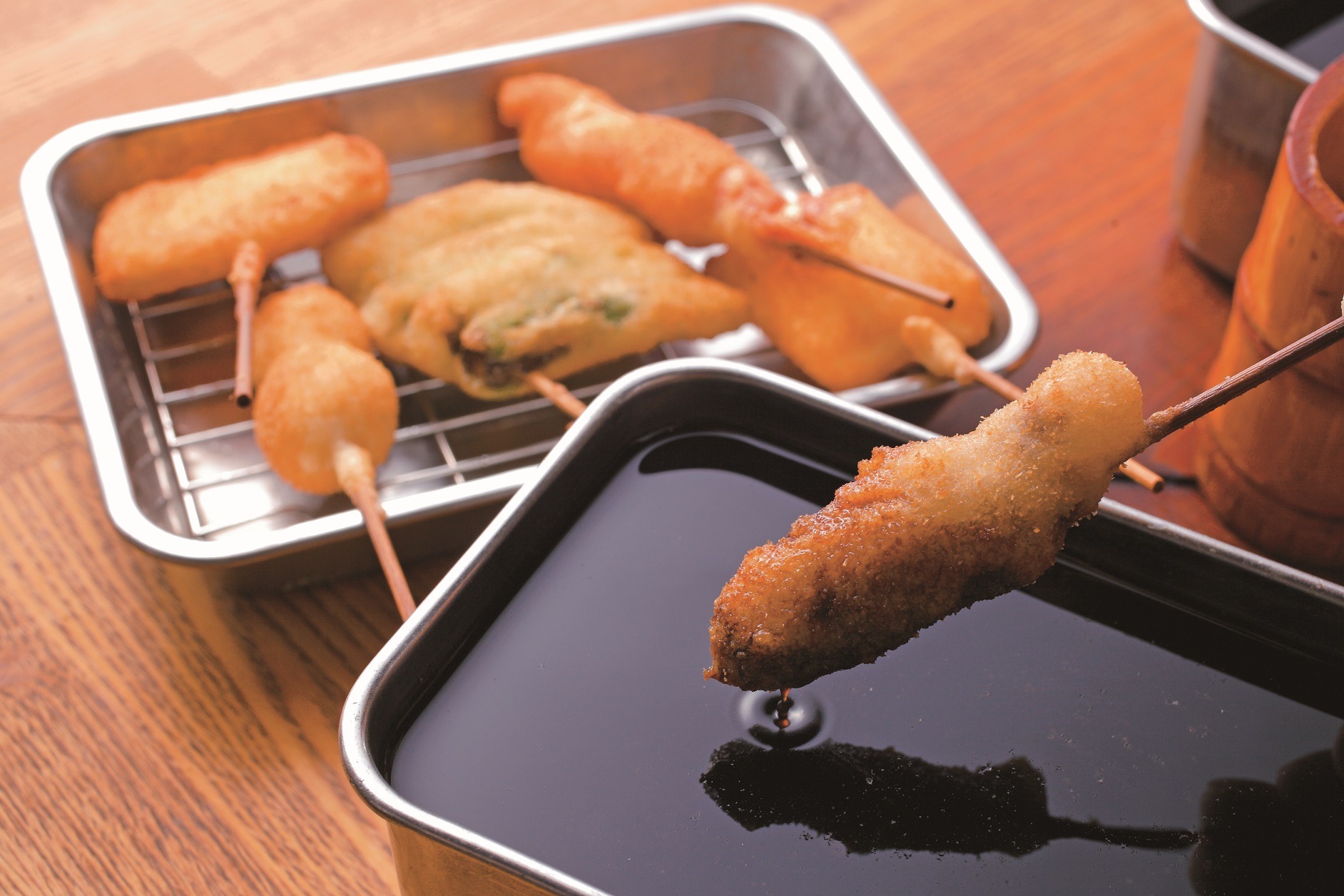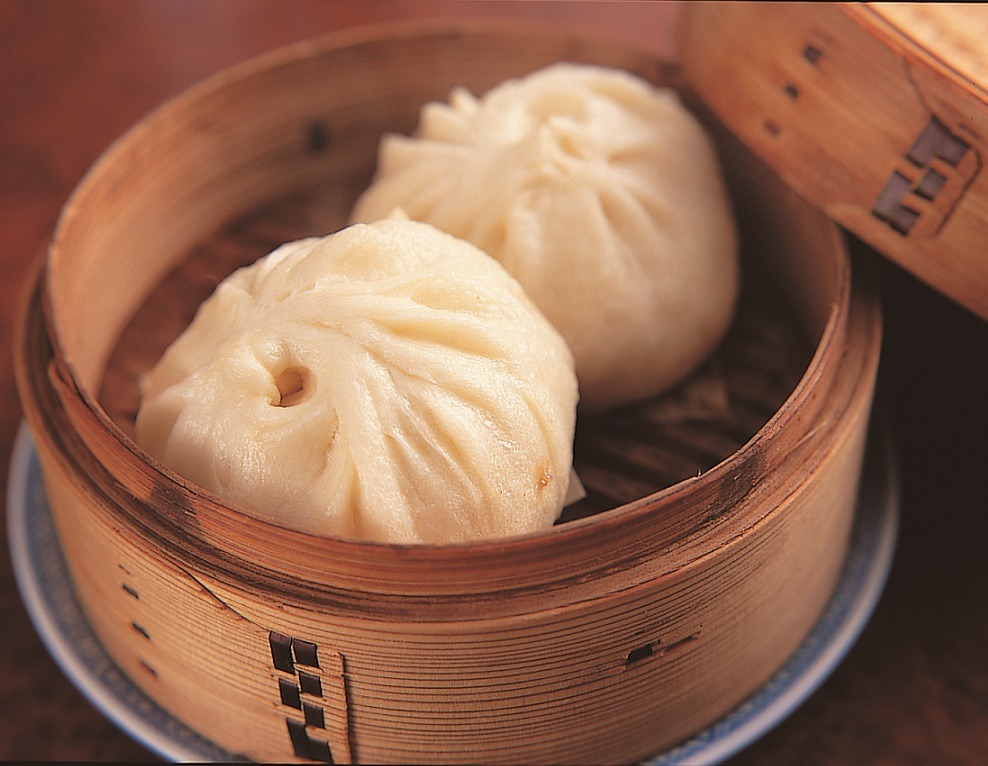大阪すし

東京の寿司は、「江戸前」と言われるにぎり。大阪すしの代表格は箱寿司です。具材を酢飯と共に型に入れて押し固める「押し寿司」の一つです。四角い木枠に寿司飯と具材を詰めて押します。木型をくるりと回しながら、押す手際は見ていて飽きないものです。

元は、鯖や鰺などの大衆魚で作られていましたが、鯛やエビなど高級魚を用いて、見た目も美しく工夫した箱寿司が明治時代に登場して人気を博し、以来、さまざまな店で継承されています。
また、箱寿司の中でも、鯖の上に酢漬けの白板昆布をのせたものを「バッテラ」と呼びます。語源はポルトガル語で小舟。大阪では町の寿司屋や定食屋で親しまれています。
食べやすく、彩り美しく、口の中で具と米が程よく融合するのが魅力です。醤油を付けずにそのまま味わえるので、芝居見物の幕間に、また手土産として重宝されてきました。

江戸前のにぎり寿司には軟質米が合いますが、箱寿司には大阪から近い近江に産する硬質米が良いとされます。
時間が経っても水分がしっかり中に閉じ込められているので、翌日も美味しくいただける米です。それを昆布だしで炊き、砂糖やみりんで味付けします。
保湿効果がある砂糖を用いるのは、持ち帰り寿司ならではでしょう。この味が大阪で長く愛されてきたので、にぎり寿司にも砂糖を使う店が少なくありません。

明治・大正の頃は、「江戸のにぎり寿司、上方の箱寿司」と言われていましたが、仕込みに時間と技術を要する箱寿司を作れる店は減っています。それでも、数少ない大阪寿司の専門店が、箱寿司のほか棒寿司、巻き寿司、上方ちらし寿司、蒸し寿司などを作り、今も伝統の味を守り伝えています。
また、江戸前の本格的なにぎり寿司が大阪で流行り出したのは、明治維新後とか、関東大震災後とか諸説ありますが、今ではにぎり寿司も、大阪近海のネタを用いて、大阪好みのにぎりとして完成され、多くの暖簾が掲げられています。
その他のおすすめグルメ
-
 うどん(うどんすき)
うどん(うどんすき)大阪のおうどんは、軟らかい口当たりの麵と、それに優しく寄り添う昆布とカツオ節のだしとのハーモニーが魅力です。
-
 たこ焼き
たこ焼き屋台で買って、気軽に街角で食べられる、大阪のファストフードの代表格・たこ焼き。歴史は意外に浅く、昭和30年代から、町に店が増え始めたと言われます。
-
 オムライス
オムライス胃の悪い常連客が毎日オムレツと白ご飯を食べているのを不憫に思った店主が、ケチャップライスを薄焼き卵で包んで出したところ、客は大喜び。
-
 お好み焼き
お好み焼きたこ焼きと並ぶ、大阪人のソウル・フードです。小麦粉をだしで溶くのも同じで、具はキャベツが必須、豚肉が人気、あとはお好み焼きの名の通り、好みのままに。鉄板の上で丸く平たく生地を広げて焼き上げます。
-
 串カツ
串カツ「二度漬け禁止」で有名な大阪の串カツ。肉や野菜を串に刺し、水溶き小麦粉の衣にパン粉を付けて油で揚げます。
-
 割烹料理
割烹料理江戸時代に栄えた料亭が廃れ始め、もっと気軽に楽しめる和食店を時代が求める中、生まれたのが割烹スタイルです。
-
 紙なべ
紙なべ摩訶不思議な紙なべも大阪発祥です。紙を火に掛けるなんてと誰もが驚くことでしょう。
-
 回転寿司
回転寿司コンベヤーの上を、寿司を載せた小皿が流れていき、客は好みのものを皿ごと取って食べます。半セルフサービス型の安価で明朗会計の気軽なスタイルは、家族連れや観光客にも利用しやすく大人気を得ています。
-
 豚まん
豚まん明治維新後、中華街に伝えられた中華饅頭を日本人好みの味にアレンジしたものが始まりとされています。




